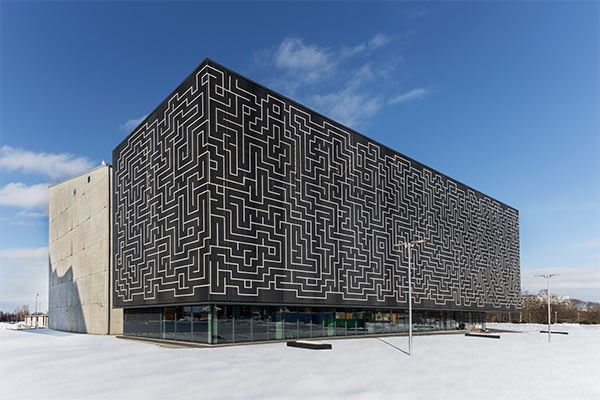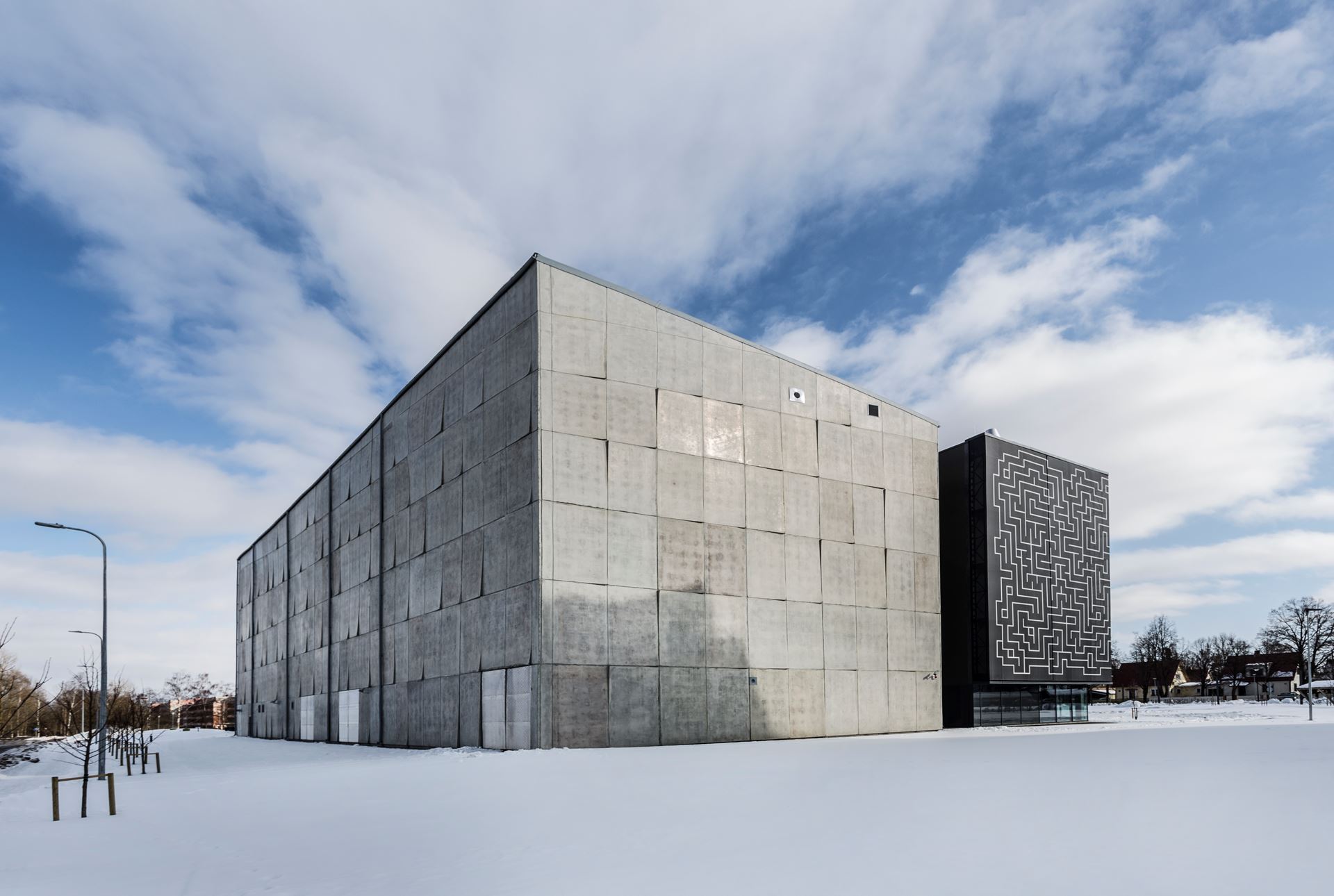Elanikud soovitavad: Päevalille 17 sai erakordselt kõrge hinnangu
- EE Articles
- Pressiteated
- 31.01.2017
Pressiteade: Täna avatav Rahvusarhiiv viib Eesti sammu edasi tuleviku poole
Euroopa moodsaim rahvusarhiiv sündis YIT Ehituse, Riigi Kinnisvara ja Rahvusarhiivi ühise meeskonna koostöös. Vaatamata pingelisele ajagraafikule, hoone spetsiifikale ja varade säilitamise tingimustele anti hoone kasutusluba üle isegi kuu aega enne tähtaega.

“Silmapaistvad objektid sünnivad ehitaja, tellija, projekteerija, arhitekti, järelvalve ja lõppkasutaja koostöös,” on YIT Ehituse ehitusdirektor Toomas Rapp veendunud.
Vaatamata Rahvusarhiivi ehitamise pingelisele ajagraafikule, hoone spetsiifikale ja varade säilitamise tingimustele anti hoone kasutusluba üle isegi kuu aega enne tähtaega tänu korrektsele projekteerimisele. Aasta kestnud kolimise käigus on kolitud 3,5 miljonit säilikut.
2014. aasta sügisel välja kuulutatud Rahvusarhiivi hoone ehitushankel kasutas Riigi Kinnisvara AS esmakordselt Eestis uudset väärtuspunkide arvestamise meetodit, kus ehituse maksumus andis 80 väärtuspunkti ja tööprogramm 20 väärtuspunkti. Seega hinnati mitte ainult ehituse hinda, vaid ka ehituse ja kvaliteedi juhtimist ning komisjoni ees tuli esitleda tööde korraldamise ja juhtimise plaani, ajagraafikut, samuti keskkonna- ja ohutusplaani.
“Meie meeskond tegi ära põhjaliku eeltöö ja saime programmi eest 19 punkti 20-st. Kasutasime ehitusprotsessi juhtimiseks ja kontrolliks reaalajas 5D projektijuhtimise tarkvaralahendust, sealhulgas BIM ehitusinfo modelleerimist, mis tol ajal oli uudne,” selgitas YIT Ehituse divisjonijuht Andres Jakobi.
Ehitusel andis olulise ajalise ja rahalise võidu hoone 3D mudel, kuna nii oli maja kujund enne ehitust näha ja sõlmküsimusi sai lahendada projekteerimise käigus, mida tavaliselt joonistega ei saa teha. “Arhitektuurselt mudelilt projekteerisime hoone konstruktiivsesse mudelisse ja nägime kohe ära, kuhu näiteks tulevad erinevad torud ja ei tohiks tulla kommunikatsioonide ristumisi,” rääkis YIT Ehituse objektijuht Märt Kakkum. 3D mudel oli tihti kasutusel koosolekutel, et ka need meeskonna liikmed, kes igapäevaselt ehitusega ei tegele, saaksid paremini valmivast hoonest ettekujutuse.
Et tagada Rahvusarhiivi kui olulise avaliku hoone ja arhiivi spetsiifiliste funktsioonide sujuv ehitus, loodi Riigi Kinnisvara, Rahvusarhiivi, ehituse järelevalve, arhitektide ja YIT poolt ühine meeskond, kes kogu ehitusperioodi jooksul iganädalaselt kohtus. “Kõigile oli tähtis, et ehitus saaks õigel ajal ja kvaliteetselt valmis. Parim tulemus sünnib koostöös ja ühises meeskonnas tegid kõik oma tööd südamega,” rääkis Rahvusarhiivi ehitust juhtinud tollane YIT Ehituse projektijuht Sven Rumm. Ehkki ehituses on iganädalased töökoosolekud tavapärased, oli erinevatest juhtimistasanditest YIT meeskond lausa 9-liikmeline: ehitusdirektor Toomas Rapp, divisjonijuht Andres Jakobi, toonane projektijuht Sven Rumm, objektijuht Märt Kakkum, objektijuht Markus Mägi, hankejuht Hannes Piisang, objekti insener Olari Aas, eritööde projektijuht Hanno Vahtla ja elektritööde projektijuht Tormi Leinart.
Ka Riigi Kinnisvara AS-i projektijuht Margus Männo sõnul sujus koostöö YIT Ehitusega meeldivalt ja probleemid lahendati kiiresti. “BIM projekt ehk ehitusinformatsiooni mudel aitas juba enne ehitust näha probleemkohti, nii et ei pidanud enne valmis ehitama ja siis muutma hakkama,” rääkis Männo, kes BIM projekti esmakordselt praktikas Rahvusarhiivi ehitusel kasutas.
Rahvusarhiiv mõjub väga modernsena. Maja on jaotatud kaheks, esimeses pooles on kontori osa, seal töötavad arhivaarid ja sinna saavad minna külastajad ja maja tagumine pool on arhiiv. Kaks hoonet on ühendatud klaaskatusega galeriiga ja ühendatud valtsitud vaseplekiga kaetud sildadega. Ajapikku peaks vask muutuma roheliseks, et illustreerida, kuidas materjal aja jooksul muutub.
Rahvusarhiivi arhitektuurse ja sisearhitektuurse lahenduse autorid on Illimar Truverk / Arhitekt11, Sander Aas/Asum Arhitektid, Tüüne-Kristin Vaikla/Vaikla Stuudio, Urmo Vaikla/Vaikla Stuudio, peaprojekteerija: Arhitekt11.
Kuna tegemist on esindushoonega, on välja töötatud sisekujundus läbimõeldud ja pilkupüüdev. Rahvusarhiivi kontori osa fassaad on kaetud mustrilise trükikangaga, mille kunstilise lahenduse kohta korraldas Riigi Kinnisvara AS eraldi hanke, mille võitis muster “Uure”. Arhiivi osa on kaetud paberilehti jäljendavate paneelidega. Kokku on 8 erineva kujuga paneeli vormid, mis mõjuvad seinal kõik veidi erinevalt. Murtud paberilehe joont järgivad ka suured keraamilised 60x60 seinaplaadid, mis on arhiivi köögi osades ja WCdes. Ka sisekujunduses on kasutatud palju tumedaid toone ning kui ehituse käigus tundus, et mulje jääb väga tume, siis lõpptulemus on suurepärane.
Arhiivi spetsiifikast tulenevalt tuli tähelepanu pöörata vara säilitamise ja säilimise tingimustele, mis nõuavad kindlat temperatuuri ja niiskuse taset. Nii paber- kui ka digitaalse arhiivi ruumis tagavad täpse temperatuuri ja niiskuse taseme täppiskonditsioneerid.
Samuti ei saa digitaalarhiivi hoidlates kasutada tavapärast tuletõrjesüsteemi, mis vee kasutamise korral hävitaks digiainese. Seetõttu on digitaalarhiivi hoidlates gaaskustutus, kus kasutakse argooni ja lämmastiku segu. “Tulekahju korral düüsid avanevad ja viiakse hapnikutase alla 15%. Selline õhukonsistents ei ole põlemiseks piisav ja tuli ei saa õhku peale ning kustub ise ära,” selgitas Sven Rumm.
Ligi aasta jooksul kolimise käigus on uude majja toodud 3,5 miljonit säilikut. Eesti Rahvusarhiivi riigiarhivaar Priit Pirsko sõnas: “Meil oli ehitajale kaks peamist ootust: esiteks, et arhiivi südames ehk hoidlas oleks saavutatud õige temperatuur ja niiskustase. Ja teine ootus oli, et arhiivi kasutusfunktsionaalsus oleks uurijatele ja kasutajatele vastavad 21. sajandile. Noora puhul on mõlemad ootused täidetud.” Pirsko sõnul on umbes aasta kolitud, alustati Tallinnast, Haapsalust ja Kuressaarest materjalide kolimist ja kõige suurem hulk - 110000 arhiivikarpi - koliti Tartust vanast Liivi tänava arhiivimajast. “Eks uus maja vajab kohanemisaega, inimestele on see suur muutus, kui kolida 1904. aastal ühiselamuks ehitatud majast Rahvusarhiivi jaoks ehitatud majja. Noora majas töötab ligikaudu 80 inimest ja inimesed on rahul ja õnnelikud. Oleme ootusärevad, sest 3.-4. veebruaril on avatud uste päevad ja meie arhiivi uksed on lahti kõigile Eesti inimestele ja Eesti külalistele,” lausus PIrsko.
Rahvusarhiiv valmis eelmise aasta märtsis ja uus maja mahutab 43 riiulikilomeetrit materjale. Rahvusarhiiv on kõigile huvilistele avatud 3.-4. veebruaril avatud uste päevadel.
YIT Ehitus AS on Eesti juhtivaid ehitusettevõtteid, mis kuulub Soome ehitusteenuseid pakkuvasse kontserni YIT. YIT kontsern on säästlikke linnakeskkondi loov ehitussektori liider, kes ehitab elamuid, ärihooneid, taristut ja terveid piirkondi. YIT keskendub sellele, et pakkuda esmaklassilist kliendikogemust ja kõrget kvaliteeti ning tagada oma mitmekülgse asjatundlikkuse järjepidev areng. YIT tegutseb Soomes, Venemaal, Baltimaades, Tšehhis, Slovakkias ja Poolas. Ettevõtte eesmärgiks on olla kogu aeg sammu võrra ees, hoolides samas nii oma klientidest, partneritest kui ka töötajatest. YIT-l on rohkem kui 5300 töötajat kaheksas riigis. 2015. aastal oli müügitulu peaaegu 1,7 miljardit eurot. Ettevõtte aktsiad on noteeritud Nasdaq OMX Helsinki börsil. www.yitgroup.com
Pildigalerii: https://www.dropbox.com/s/2xya1pqfja12nj1/Rahvusarhiiv%20Tartus%2C%202016.zip?dl=0
Lisainformatsioon:
Kadi Aljas
AS YIT Ehitus turunduse spetsialist
6652100
kadi.aljas@yit.ee






